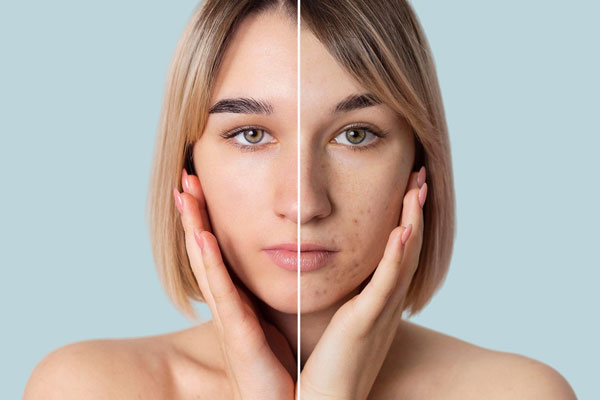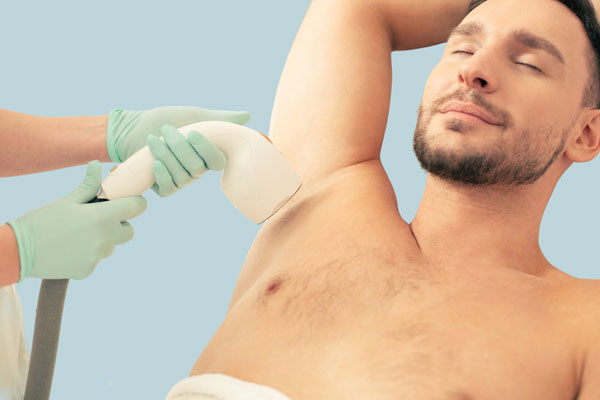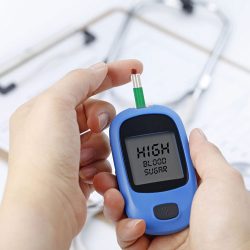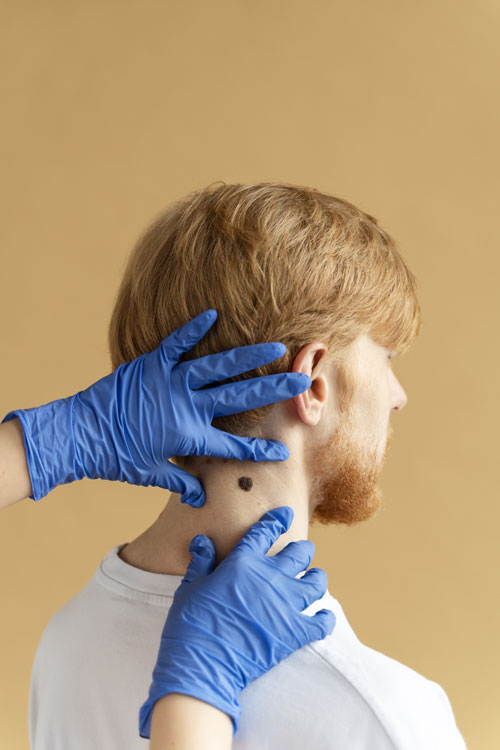Our Treatments

Hair Clinic

Dermatology




Looking into skin tag removal? Here we explain what skin tags are and how we can help to remove them.
Clear and transparent pricing
Looking into skin tag removal? Here we explain what skin tags are and how we can help to remove them.

Skin tags are painless, benign growths that tend to occur in areas where your skin folds, for example your neck, armpits, groins, breasts and eyelids.
Composed of loose collagen fibres and blood vessels, skin tags can vary in size from a few millimetres up to a few centimetres.
While generally harmless, skin tags can make those who have them feel self-conscious and can even be painful if caught on clothing or jewellery.
Because of this, many often look into skin tag removal.

01
There is more skin to skin contact leading to increased friction and a higher risk of skin tag formation.

02
During pregnancy the skin undergoes a number of changes and growth, often leading to more areas rubbing and the potential to develop skin tags.

03
While the exact link between diabetes and skin tags is unconfirmed, what is known is that diabetics are more susceptible to developing them.
For your skin tag removal treatment, a local anaesthetic will be applied or injected into the area beforehand to ensure the procedure is as pain-free as possible.
Skin tag removal can be carried out in a number of ways, namely:
A process in which the skin tag is burned off using electrolysis.
A small amount of liquid nitrogen is sprayed over the skin tag to freeze off the growth.

A very common and straightforward procedure, skin tag removal is completely safe and is always carried out by our medical experts.
The best method for removing skin tags is surgical excision since this treatment is relatively pain-free and involves little to no side effects. By contrast, cauterization and cryosurgery have the potential to irritate the skin, and, in rare cases, can cause temporary skin discolouration. Moreover, surgical excision removes a skin tag entirely in one appointment, whilst the other treatments may require several sessions for the skin tag to be wholly removed.
In some cases, skin tag removal can be painful, though most patients report that they only felt a little uncomfortable. A local anaesthetic is used prior to all of the different skin tag removal treatments that we offer to reduce pain as much as possible.
Once a skin tag has been removed, it typically takes 1 to 2 weeks for the scab to fall away and the skin to heal completely.
Assuming your doctor sees no medical reason for you to not get rid of your skin tag, they can be removed from any area of the body.
When a skin tag is removed via surgery, there is usually a scar. However, this will fade and heal over time (typically after 5 to 7 days have passed).
The procedure will remove the skin tag for good, however be aware that this treatment will not prevent further skin tags developing in other areas of the body.
There is minimal risk of complications following skin tag removal, meaning you are free to go home straight after the procedure. Following treatment, the area should ideally be covered as well as wearing a high factor sunscreen. A small scab may form, this will fall away within a few days and there should be no scar or marks afterwards.